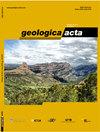墨西哥东北部加莱阿纳晚三叠纪-侏罗纪的火山岩序列硅化碎屑岩和蒸发岩
IF 2
4区 地球科学
Q2 GEOLOGY
引用次数: 8
摘要
在墨西哥东北部,与晚三叠纪-侏罗纪硅化碎屑岩和蒸发岩地层互层的火山岩在碎裂的初始阶段与盘古大陆西部边缘形成的岩浆弧有关。这项工作为Galeana地区露头的El Alamar和Minas Viejas地层中的火山活动提供了新的岩石学和地球化学数据。El Alamar红层中的安山岩脉和岩床(n=10)显示SiO2=47.5–59.1%,MgO=1.2–4.2%,以及与岛弧岩浆的地球化学亲和力。这项工作是该地区首次报道这种构造环境。地质和岩相证据表明,该弧系可能在~220 Ma之后和~193 Ma之前形成。与Minas Viejas石膏-碳酸盐岩序列相关的Trachy安山岩和流纹岩圆顶(n=20)显示SiO2=61.8–82.7%,MgO=0.1–4.0%,与大陆弧具有构造亲和力。该地区的一个流纹岩样品已通过锆石U-Pb测年,得出的年龄为149.4±1.2Ma(n=21),是与该弧相关的最年轻年龄。最后,我们提出了一个三步模型来解释墨西哥东北部晚三叠纪岛弧到侏罗纪大陆弧系统的构造演化。本文章由计算机程序翻译,如有差异,请以英文原文为准。
Volcanic sequence in Late Triassic – Jurassic siliciclastic and evaporitic rocks from Galeana, NE Mexico
In northeastern Mexico, volcanic rocks interbedded with Late Triassic–Jurassic siliciclastic and evaporitic strata have been linked to magmatic arcs developed in the Pangea western margin during its initial phase of fragmentation. This work provides new petrographic and geochemical data for volcanism included in the El Alamar and Minas Viejas formations outcropping in the Galeana region. Andesitic dykes and sills (n= 10) in the El Alamar redbeds show SiO2= 47.5–59.1% and MgO= 1.2–4.2%, as well as a geochemical affinity to island arc magmas. This work represents the first report of this tectonic setting in the region. Geological and petrographic evidence suggest that this arc system likely developed after ~220 and before ~193Ma. Trachy-andesitic and rhyodacitic domes (n= 20) associated with the Minas Viejas gypsum-carbonates sequence show SiO2= 61.8–82.7% and MgO= 0.1–4.0% with a tectonic affinity to continental arc. A rhyodacite sample from this region has been dated by U-Pb in zircon, yielding an age of 149.4 ± 1.2Ma (n= 21), being the youngest age related to this arc. Finally, we propose a threestep model to explain the tectonic evolution from Late Triassic island arc to Jurassic continental arc system in the northeastern Mexico.
求助全文
通过发布文献求助,成功后即可免费获取论文全文。
去求助
来源期刊

Geologica Acta
地学-地质学
CiteScore
2.50
自引率
6.70%
发文量
13
审稿时长
>12 weeks
期刊介绍:
- Relevant conceptual developments in any area of the Earth Sciences.
- Studies presenting regional synthesis.
- Thematic issues or monographic volumes presenting the results from one or more research groups.
- Short papers reflecting interesting results or works in progress.
- Contributions and results from Research Projects, Workshops, Symposiums, Congresses and any relevant scientific activity related to Earth Sciences.
- Geologica Acta aims to stimulate rapid diffusion of results and efficient exchange of ideas between the widespread communities of Earth Science researchers (with special emphasis on Latinamerica, the Caribbean, Europe, the Mediterranean
 求助内容:
求助内容: 应助结果提醒方式:
应助结果提醒方式:


